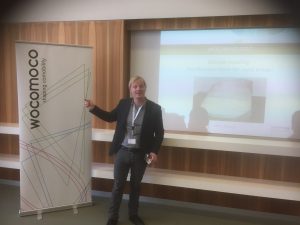Translating Shared Mobility for Rural Areas: the Rosetta Stone for Car-Sharing in Small Towns
By Jeffrey Matthijs, Autodelen.net
Talking about shared mobility, rural areas are often seen as problematic. “People need a car (or more than one) because public transport is not sufficient in these areas, distances are too big, there’s no viable business model for public transport in these areas or it rains all the time” (at least in the North Sea Region). Those are just a few arguments against shared mobility that sceptics tend to give. I do not agree and I will give some examples of how to make it work.
Local governments are in charge
Most important, local governments are the key players because they are in the driving seat on different important fields for installing shared mobility such as local policy – and decision making, shaping public space, setting up parking standards, and so on. Moreover, they have the ability to communicate directly with the inhabitants and potential users. So, my dearest local governments, don’t just “like” shared mobility, plan it! One example of how to plan for shared mobility is to make it part of your municipality’s or region’s sustainable urban mobility plan (also see: share-north.eu/shared-mobility-should-be-a-part-of-every-sump).
A local government can also share its own fleet with citizens. Especially outside office hours, cars in the governmental fleet represent an unutilised resource and simply take up space. It makes sense to share them with inhabitants, not only because it’s financially interesting (by renting out fleet vehicles outside of office hours, governments can lower their operating costs) but also because, in many communities, it can be the first contact that citizens have to the concept of sharing cars. This can also contribute to better social inclusion in a town. With a social pricing system, for instance, it becomes possible to give lower incomes access to a car now and then and thus improve the chances for maintaining social contacts or gaining access to different employment locations.
Small is beautiful: the Hill Country case
Hill Country isn’t really a country, not even a city. It is a small village of 1,000 inhabitants in Flanders, Belgium. An inspiring action was taken in Hill Country: A care centre, in cooperation with a car-sharing provider (Partago), the local government and Autodelen.net, began sharing two electrical cars with the neighbourhood. In addition to reserving the car, this initiative allows residents to reserve a driver as well. So people without a driver’s license or people who require assistance, such as the elderly can use the innovative car-sharing scheme. If we are talking about sustainable, inclusive and smart mobility on a local level, this is one of the best examples, as far as I’m concerned. The experiment in Hill Country has proven successful and the care centre will duplicate this idea in other cities. The same idea is being used to share wheelchair-friendly cars (named the AVIRA-project) in several rural areas in Flanders. The beauty is that users are getting engaged to act as a volunteer drivers for persons with reduced mobility.
Deciphering the rural mobility Rosetta Stone
I could go on and on about the many innovative things that are happening in rural Flanders. For instance, the more than 5,000 households that are sharing cars in little closed groups on a cost-based system or the 40,000 elderly (in average age 80!) who can use a voluntary taxi service run by other seniors. But for now, I would like to end with some practical suggestions to make shared mobility the real Rosetta Stone for rural areas:

 Share North
Share North

